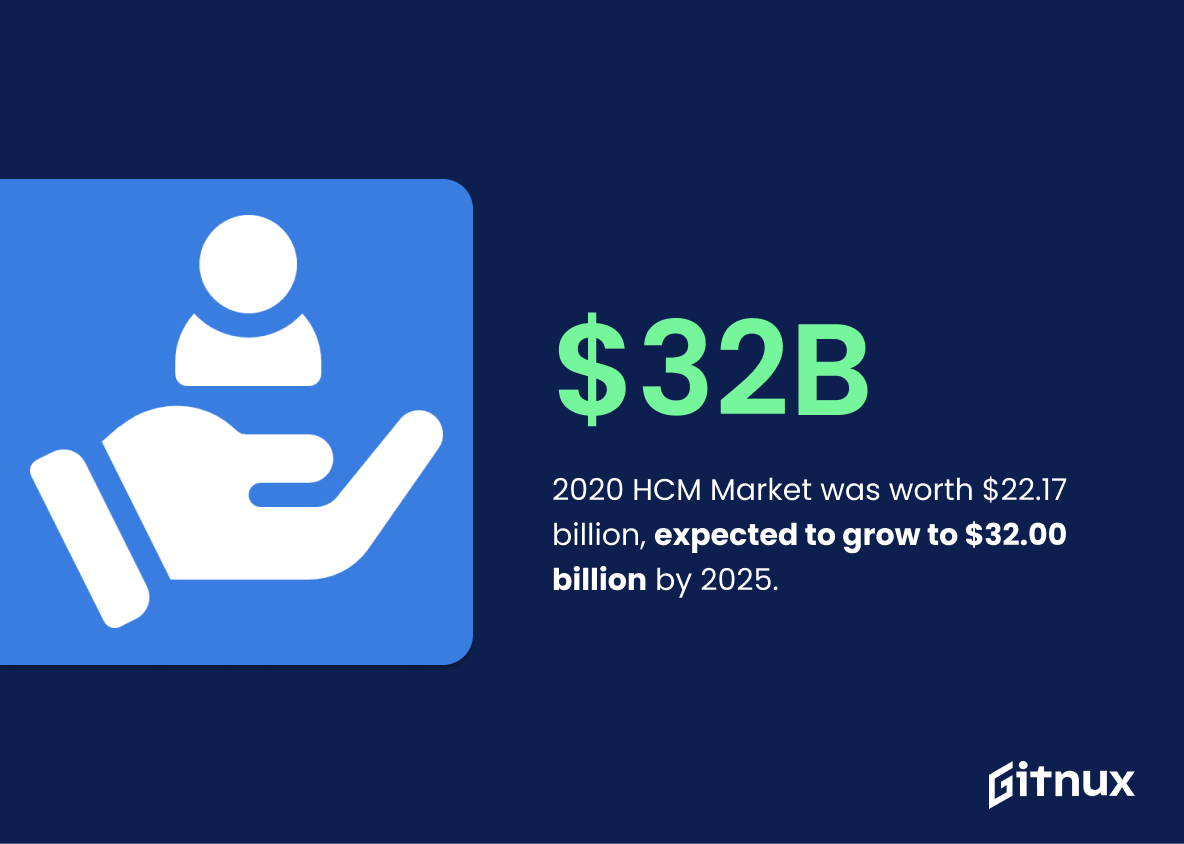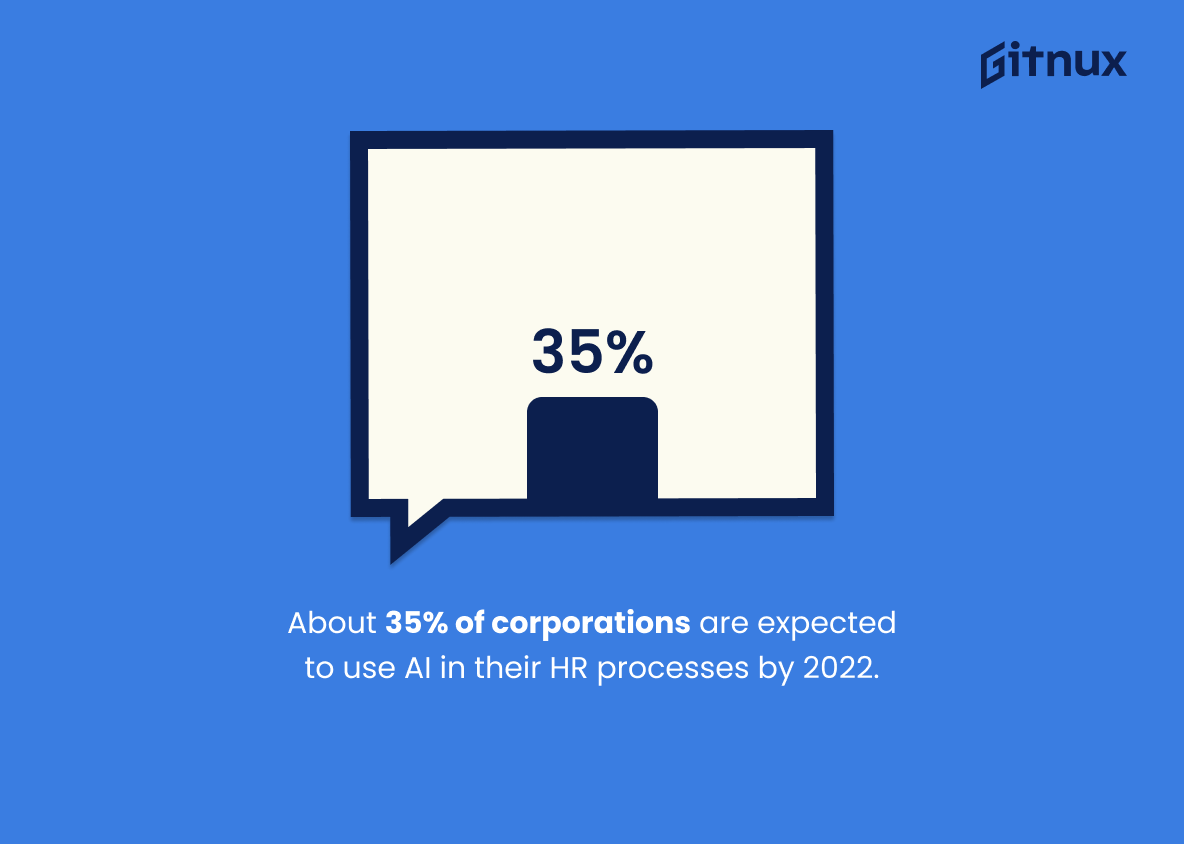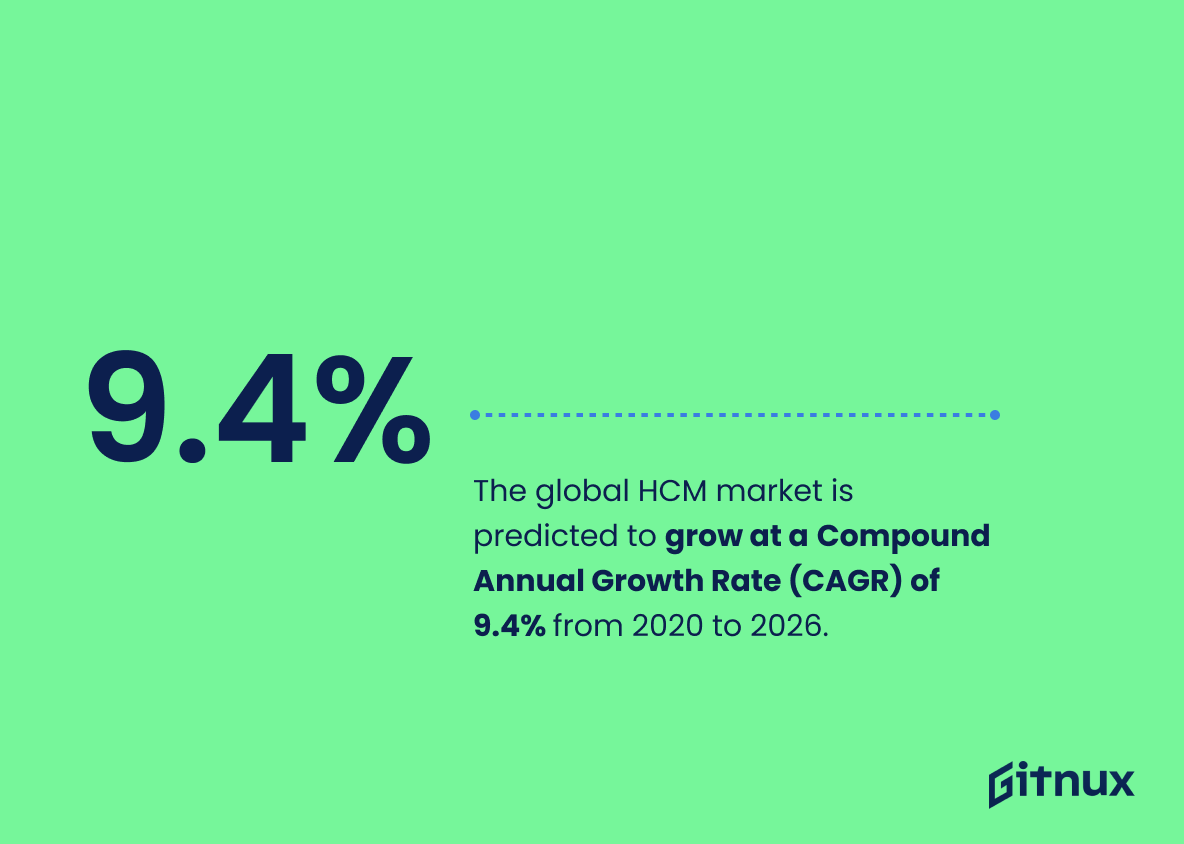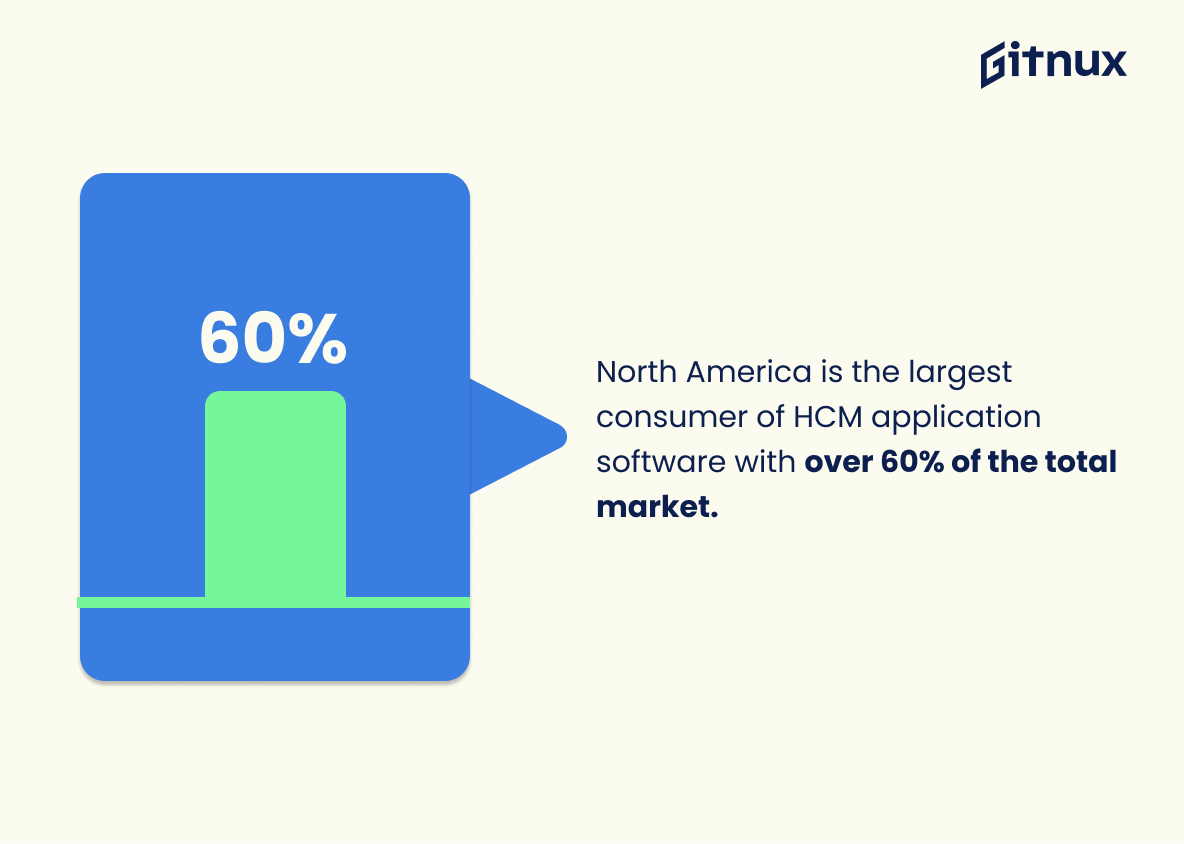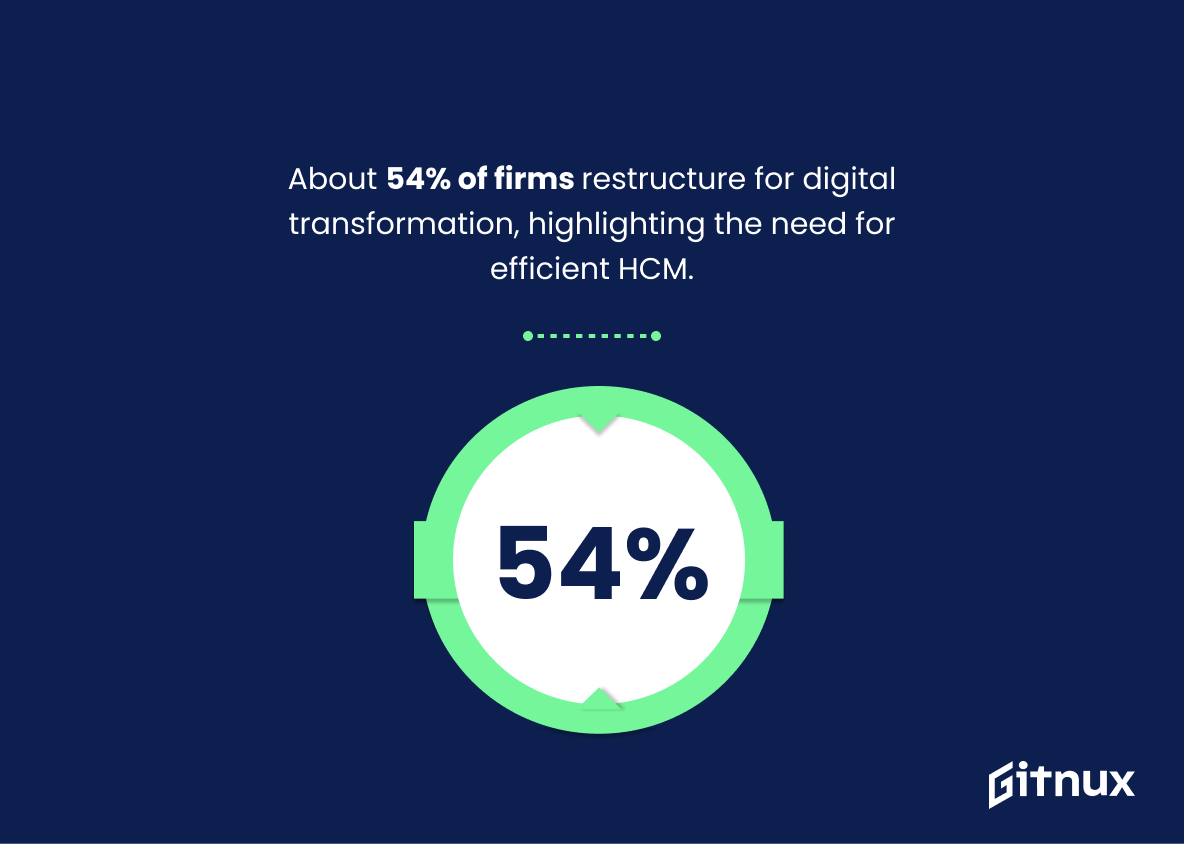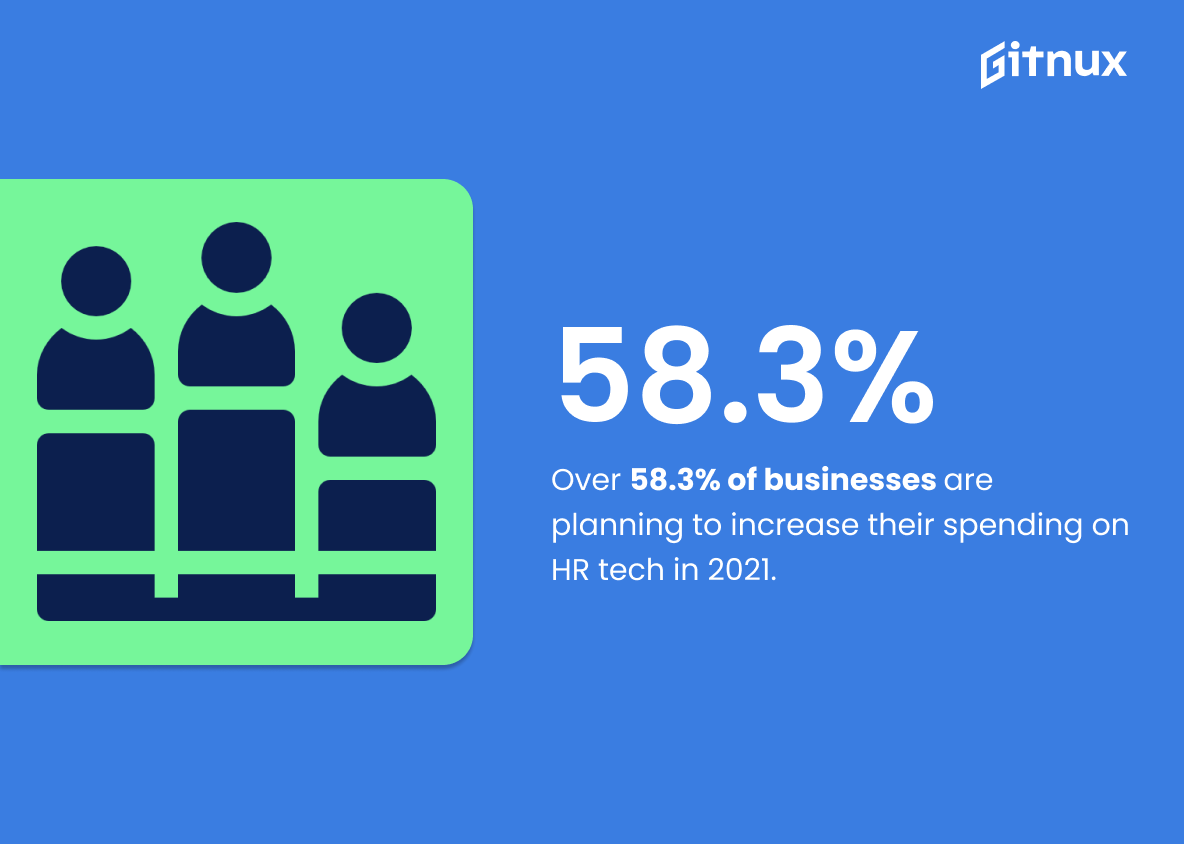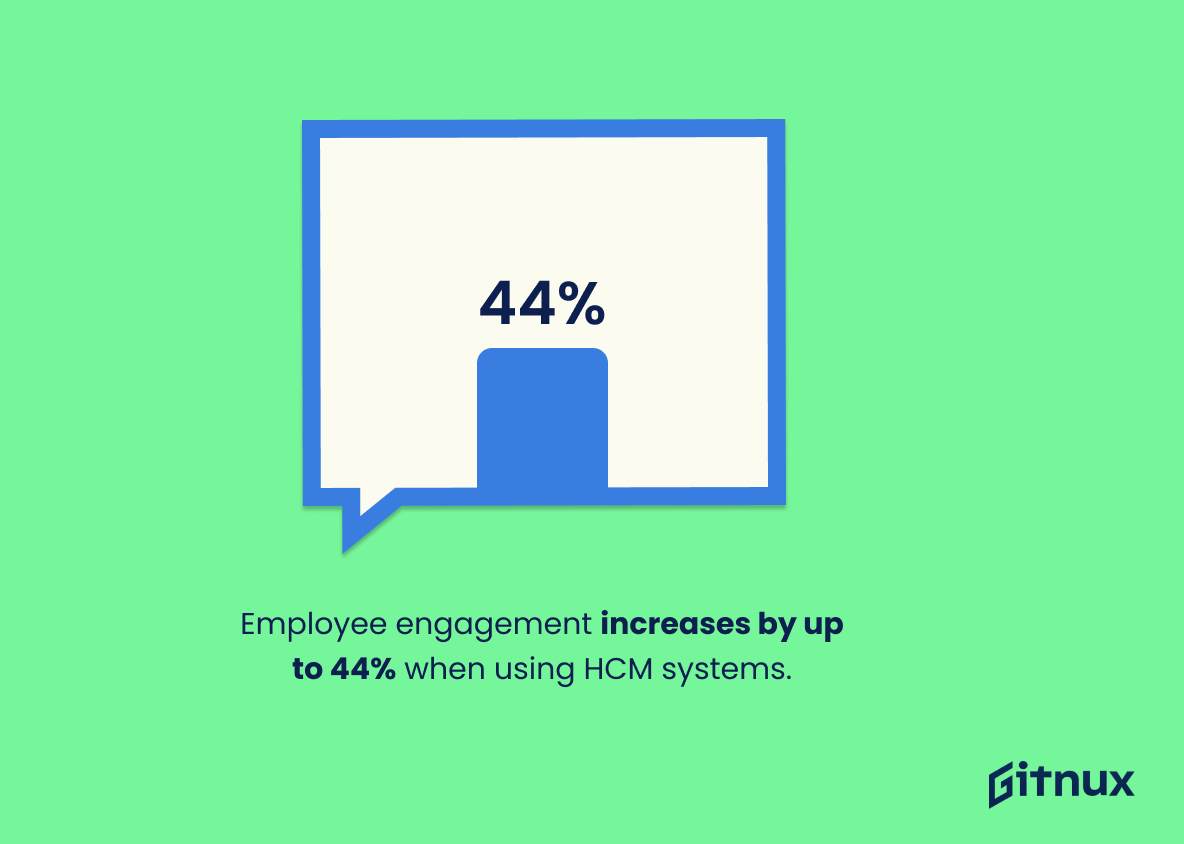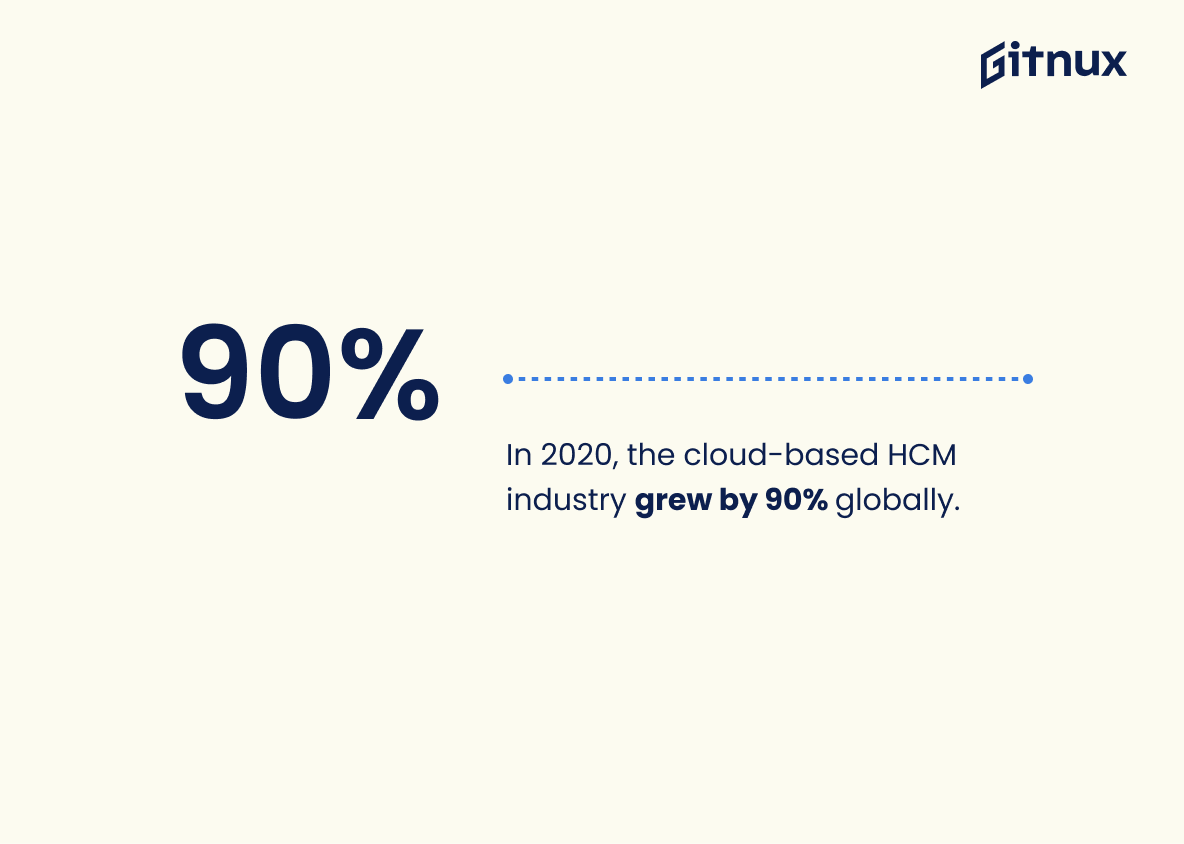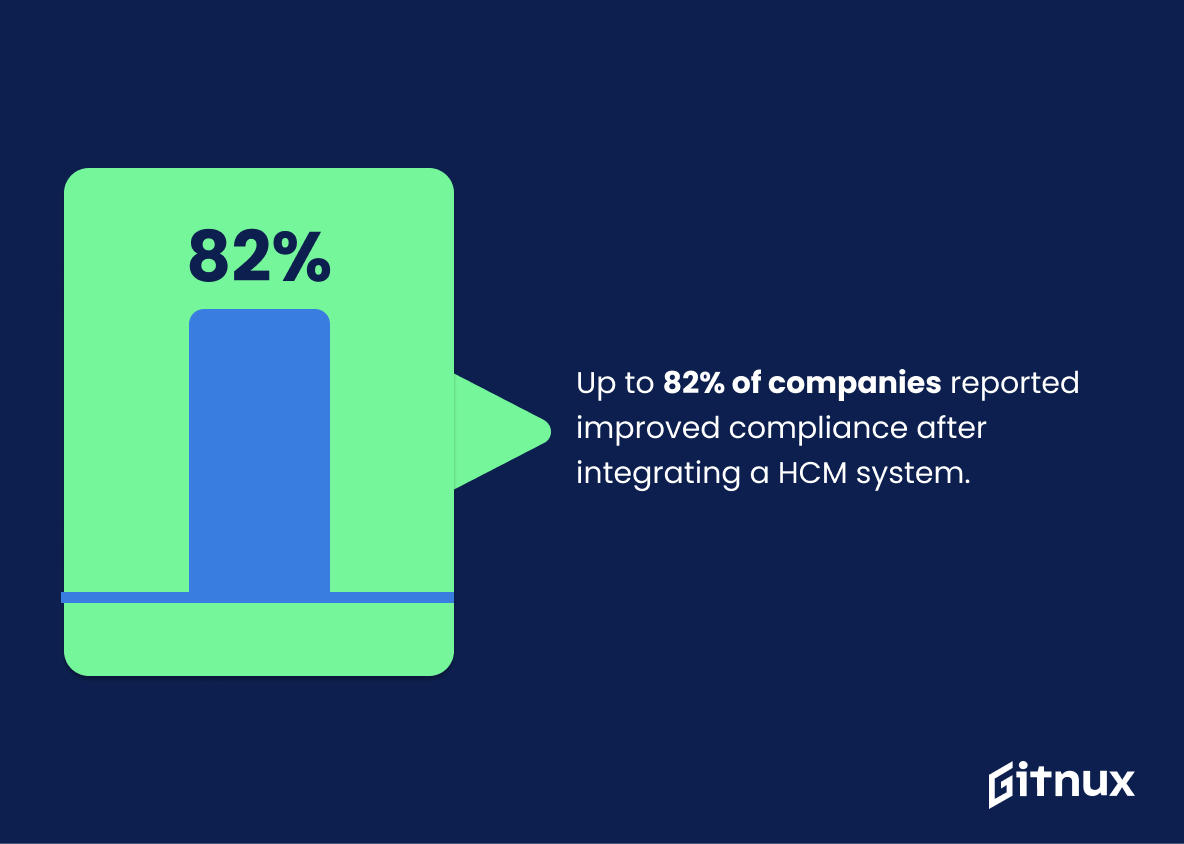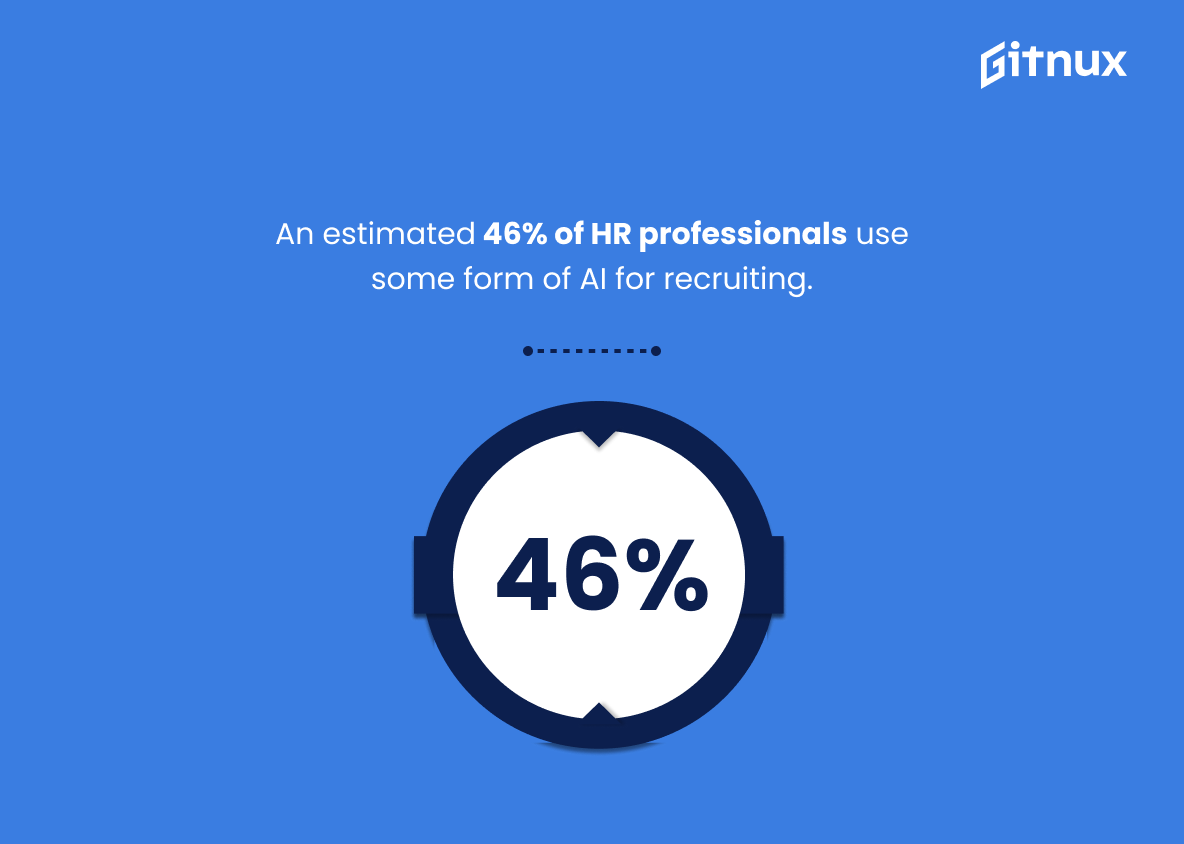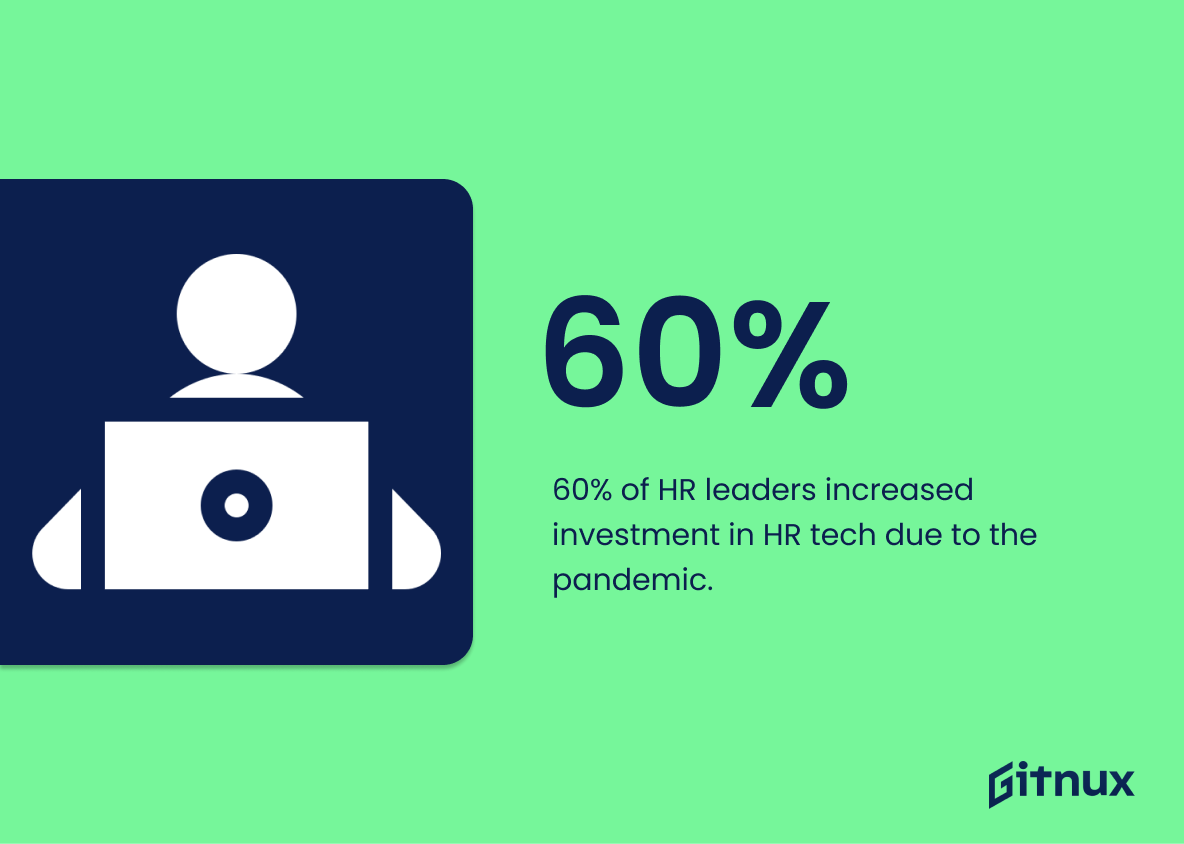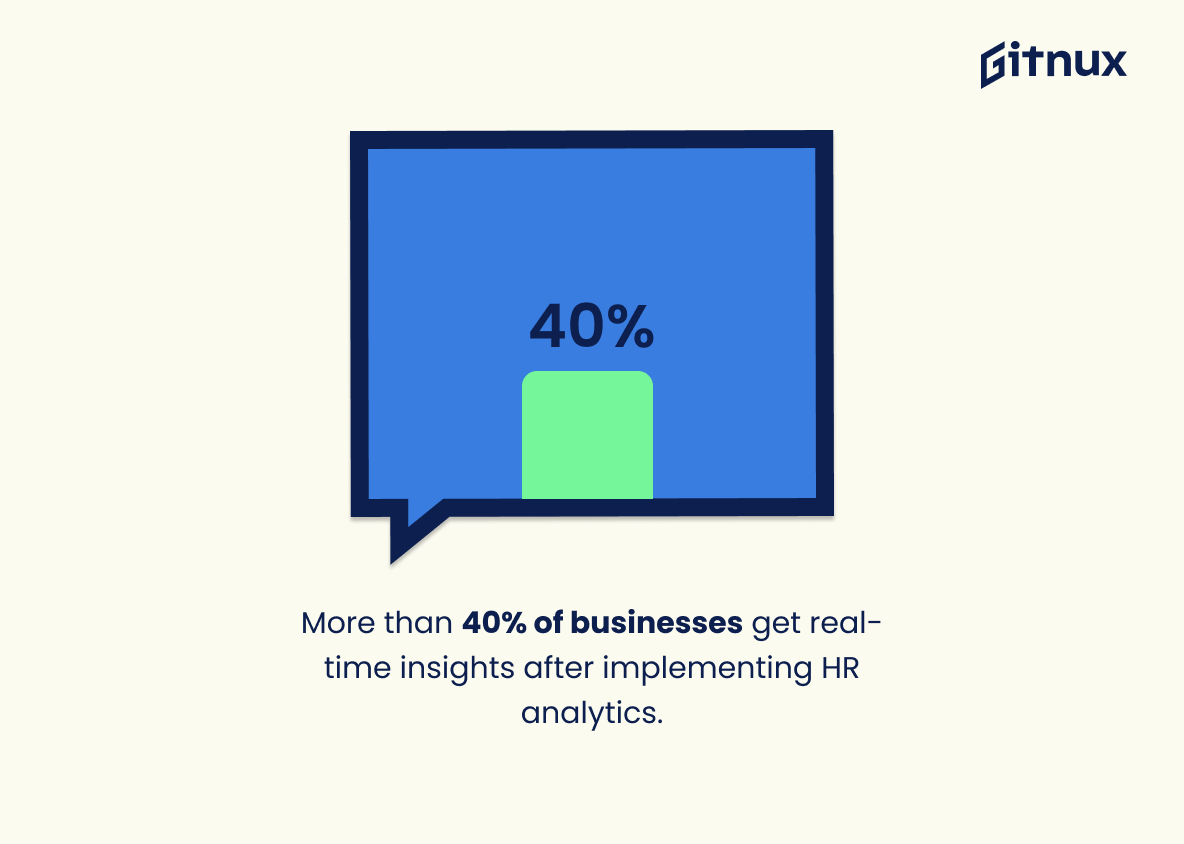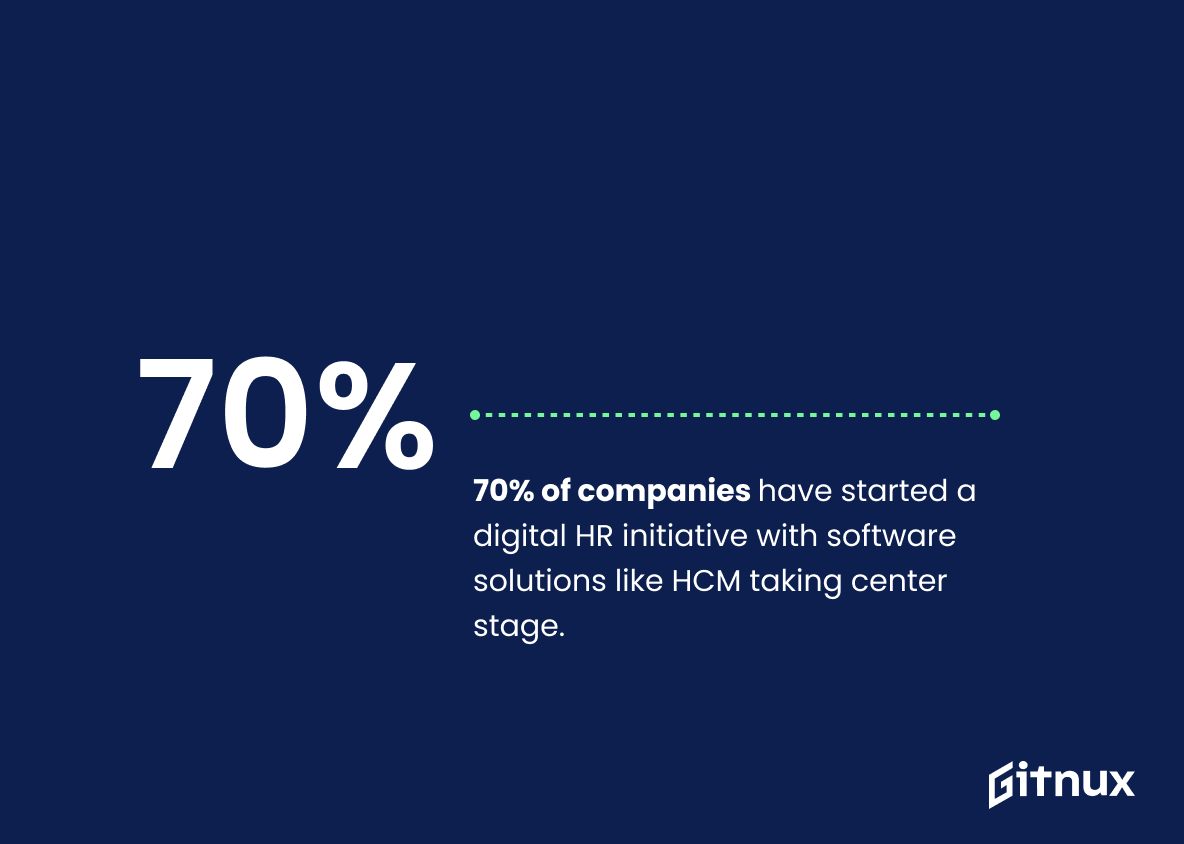In the rapidly transforming world of Human Capital Management (HCM), having a keen understanding of industry statistics is paramount. Numbers tell a story, they reflect the shift in priorities, identify growing trends, and help forecast future changes.
Whether you’re a seasoned HR professional or a business owner, our deep dive into HCM industry statistics will give you a crucial insight into the factors shaping this evolving landscape. We’ll explore data that opens up new perspectives and equip you with the knowledge you need to stay ahead of the curve. Let’s plunge into the profound world of facts, figures, and trend lines that are defining the future of HCM.
The Latest Hcm Industry Statistics Unveiled
2020 HCM Market was worth $22.17 billion, expected to grow to $32.00 billion by 2025.
In a vivid panorama of HCM (Human Capital Management) Industry Statistics, the pulsing heartbeat of growth can be seen in the figures. Notably, the HCM market held an impressive stature of $22.17 billion in 2020 that is anticipated to catapult its worth to a towering $32.00 billion by 2025. This progressive climb of almost $10 billion within a span of five years, offers an intriguing insight to any industry observer, investor, or stakeholder.
This milestone, sharp in its prominence, interweaves a narrative of opportunity-underpinned by technology advances, evolving HR practices, and constantly rising corporate needs. It testifies to the robust health of the HCM market and the vast untapped potential it still holds, foreshadowing a compelling story of exponential growth, attractive ROI, and lucrative investments that is set to unfold in the upcoming years.
About 35% of corporations are expected to use AI in their HR processes by 2022.
Delving into the heart of advancements in the HCM (Human Capital Management) industry, this juicy nugget of data underscores a compelling trend. Say hello to the anticipated adoption of Artificial Intelligence (AI) by approximately 35% of corporations for their HR processes by 2022. Not only does this forecast depict a technological leap in HR management, but it also signals the sea change in the way corporations are adapting to digitization.
Think about it – AI’s ability to streamline HR processes, enhance decision-making, and improve overall efficiency is revolutionising the traditional HR landscape. So, if you’re part of this dynamic HCM industry, keep your eyes peeled for this trailblazing trend and the significant implications it brings along. So the next time you think HR, don’t forget to think AI – it’s the future knocking on your door.
The global HCM market is predicted to grow at a Compound Annual Growth Rate (CAGR) of 9.4% from 2020 to 2026.
Highlighting the projected 9.4% Compound Annual Growth Rate (CAGR) for the global HCM market is the spotlight of a positive narrative starting from 2020 leading up to 2026. Within the blog post, this key statistic signifies an anticipated surge in the HCM industry, painting a picture of economic growth, potential rise in employment opportunities, technological advancements, and potential for business expansions.
Furthermore, it serves as a beacon of growth potential for stakeholders, revealing opportunities to diversify their portfolio, yield better returns, and ride the wave of expanding market. Having this foresight, business leaders, investors, and professionals associated with the HCM industry can make calculated strategic moves.
Moreover, this upward trend could stimulate more research and development, leading to continued enhancements in HCM products and services. Hence, this single, yet dynamic statistic weaves an intricate web of optimism, opportunity, and growth in the narrative of the HCM industry.
North America is the largest consumer of HCM application software with over 60% of the total market.
Navigating through the mesmerizing world of HCM Industry Statistics, it’s startling to stumble upon the megatrend of North America dominating over 60% of the HCM application software market. Focused on decoding the implications, one can’t help but observe the central role this nugget of knowledge plays. North America’s dominance underscores its leading edge in early adoption and integration of HCM solutions in many business processes.
This sets the stage for its businesses to reap benefits of streamlined operations, improved efficiency, and enhanced HR capabilities; all vital cogs in the wheel of thriving in today’s competitive environment. Furthermore, this prevalence can offer valuable insights into the technology acceptance levels, HR operational strategies, and resource management practices for other regions striving to harness the power of HCM tools.
Approximately 54% of companies are restructuring their organization for digital transformation, underpinning the need for effective HCM.
The embracing of the digital revolution by approximately 54% of companies, as they restructure their organization for digital transformation, is a clear sign of the compelling need for effective Human Capital Management (HCM). This leap into the digital world by over half of businesses amplifies the requirement for effective HCM which can navigate the changing tide and ensure smooth operations.
A deeper dive into this statistic initiates important discussions about the shifting dynamics in the HCM industry. It is akin to a powerful beacon illuminating the evolving landscape of human resource management in the digital age, underlining the industry’s rising significance and pushing it into the spotlight. This surging interest in digital transformation could very well steer the HCM industry to new horizons, sparking innovative solutions and trendsetting strategies.
Over 58.3% of businesses are planning to increase their spending on HR tech in 2021.
As we traverse the maze of Human Capital Management (HCM) Industry Statistics, a striking beacon of insight emerges – over 58.3% of businesses are setting the stage for an uptick in their HR tech spending in 2021. This shines a light on the evolving landscape of HCM, illustrating the thrust towards digital transformation.
It underscores the escalating importance aligning technology with people management, signaling a landmark shift in strategic business planning. Furthermore, the investment acceleration in HR tech adds a compelling layer to the narrative of business resilience and adaptability in a world that is more virtually interconnected than ever.
Employee engagement increases by up to 44% when using HCM systems.
In the world of Human Capital Management (HCM), magnifying employee engagement stands as a formidable challenge and an opportunity for operational success. The statistic of a potential 44% escalation in employee engagement through HCM systems signals a dramatic transformation. Serving as a beacon, this numerical indicator helps companies navigate the tumultuous sea of human resource management.
Implementing fail-safe HCM systems is akin to harnessing a double-edged sword: it not only boosts employee productivity and satisfaction but also sets the engine of organizational accomplishments into motion. A 44% surge is not a mere digit, it’s a testament to the untapped potential HCM systems have in altering the HR landscape and acting as a catalyst in carving high-performance workplace cultures.
In 2020, the cloud-based HCM industry grew by 90% globally.
Highlighting an impressive growth rate of 90% for the cloud-based HCM industry in 2020 underlines a potent surge in the adoption of these technologies worldwide. This striking increase not only showcases the current boom in the industry but also predicts a promising tomorrow brimming with advanced development and continued reliance on such platforms.
In the canvas of human capital management, this figure paints a story of an industry rapidly transforming with cloud technologies, which potentially set the course for more businesses transitioning to cloud-based human resources solutions. Consequently, in the abstract realm of HCM industry statistics, this particular metric has the same persuasive power as the North Star in a clear night sky, guiding the industry participants towards informed decisions and strategic planning.
Up to 82% of companies reported improved compliance after integrating a HCM system.
Delving into the world of HCM Industry Statistics, it’s compelling to highlight that as many as 82% of companies saw a significant improvement in compliance upon integrating an HCM system. This number isn’t a mere data point – it emphasizes the powerful influence of HCM systems in transforming business processes.
The capacity to enhance compliance in a business framework isn’t a trivial achievement. Compliance, after all, is a significant factor in running a successful company, with repercussions for every sector, from finance to human resources. To navigate the labyrinth of industry regulations, adherence directives, and internal protocols, companies need a robust ally – and it seems that a considerable percentage has found it in HCM systems.
Unraveling this narrative further, it sparks the question of why HCM systems are such effective agents in elevating compliance. The possibilities are numerous. These systems can streamline procedures, generate accurate reports, and automate compliance tasks. So, every time you revisit this 82%, remember it’s more than a statistic – it’s a testament to the evolving capabilities of the HCM industry and a hint at its potentially expanding role in the corporate landscape.
An estimated 46% of HR professionals use some form of AI for recruiting.
Understanding these insights sheds light on the evolving landscape of the Human Capital Management (HCM) industry. The statistic that an estimated 46% of HR professionals utilize AI for recruiting demonstrates a significant shift in industry practices. The advent of AI in HCM underscores a propensity towards streamlining workflows and enhancing decision-making precision.
It also implies that a growing number of key HR operations are integrating technology to source and manage talent, ultimately redefining traditional HR roles. Consequently, this trending adoption of AI solutions is pivotal information for stakeholders within the HCM industry, illustrating its influence on modern human resource strategy development.
60% of HR leaders increased investment in HR tech due to the pandemic.
Shining a spotlight on the seismic shifts within the HCM industry stimulated by the pandemic, the statistic – ‘60% of HR leaders increased investment in HR tech due to the pandemic,’ speaks volumes about the future of Human Capital Management. It provides quintessential proof of a robust, accelerated response to unexpected global disruptions, showcasing how industry leaders proactively leaped over the hurdles of remote work systems and reshaped their conventional workflow management.
Furthermore, it underscores a poignant narrative of resilience and adaptability, illuminating how HR tech has triumphantly emerged as a requisite ally in the demanding new-age work landscape. The number serves as both a historical marker of a transformative period in the HCM industry and an insightful forecaster, hinting at the continuously evolving and increasing role of technology in maximizing human potential in organizations through revolutionary HR tools.
More than 40% of businesses get real-time insights after implementing HR analytics.
Delving into the thrilling world of Human Capital Management (HCM) statistics, one can’t help but notice the insightful narrative: an impressive 40% of businesses gain real-time insights from HR analytics implementation. What an attention-arresting revelation. It showcases the potent potential that HR analytics brings to the business landscape. It’s like the silver bullet for more accurate and quicker decision-making, enhancing business agility in an era where promptness is invaluable.
This figure throws a spotlight on the transforming power HR analytics induce, turning traditional HR departments into strategic powerhouses. It’s the dawn of a new age where HCM isn’t just about managing personnel but harnessing the power of data for informed business decisions. Such impressive figures demonstrate the evolving role of HCM, elevating it to a pivotal player that influences an organization’s future trajectory.
Encapsulating the benefits of HR analytics in more comprehensible terms, this statistic offers a glimpse into the high-speed, data-driven corporate arena. It forms a compelling argument for companies on the fence about embracing HR analytics, proving it’s not just a fad, but the future in navigating the challenging terrains of human capital management.
70% of companies have started a digital HR initiative with software solutions like HCM taking center stage.
In the pulsating heart of the digital revolution, a notable 70% of companies have catapulted themselves into the future by embracing digital HR initiatives. With Human Capital Management (HCM) software solutions stealing the spotlight, this statistic serves as a compelling testament to the ubiquity and importance of such digital changes in the HCM industry landscape.
This signifies not merely a trend, but a strategic shift in the industry, illuminating the market’s direction and showcasing the excellent opportunities for growth and innovation. Interestingly, this statistic articulates the story of the companies’ transformative journey towards digitalization, reflecting their efforts to enhance operational efficiency, streamline administrative processes, and fundamentally, foster a productive, engaged workforce.
Conclusion
The Human Capital Management (HCM) industry’s growth and progression are undeniable as evidenced by the latest statistics. These figures reveal the heightened importance of strategic HR management in today’s business landscape. The utilization and investment in advanced HCM systems are rapidly accelerating, offering companies an effective method for talent acquisition, management, and optimization.
As more firms recognize the invaluable benefits of these systems, we can expect to see further evolution and enhancements in the HCM industry. Thus, staying abreast with the current trends and statistics of the HCM industry have never been more critical for companies striving for growth and competitiveness in the market.
References
0. – https://www.www.reportsanddata.com
1. – https://www.www2.deloitte.com
2. – https://www.www.microstrategy.com
3. – https://www.www.selecthub.com
4. – https://www.go.oracle.com
5. – https://www.www.absolutemarketsinsights.com
6. – https://www.hrdailyadvisor.blr.com
7. – https://www.www.gartner.com
8. – https://www.www.gallup.com
9. – https://www.www.ibm.com
10. – https://www.www.researchandmarkets.com
11. – https://www.www.fortunebusinessinsights.com
